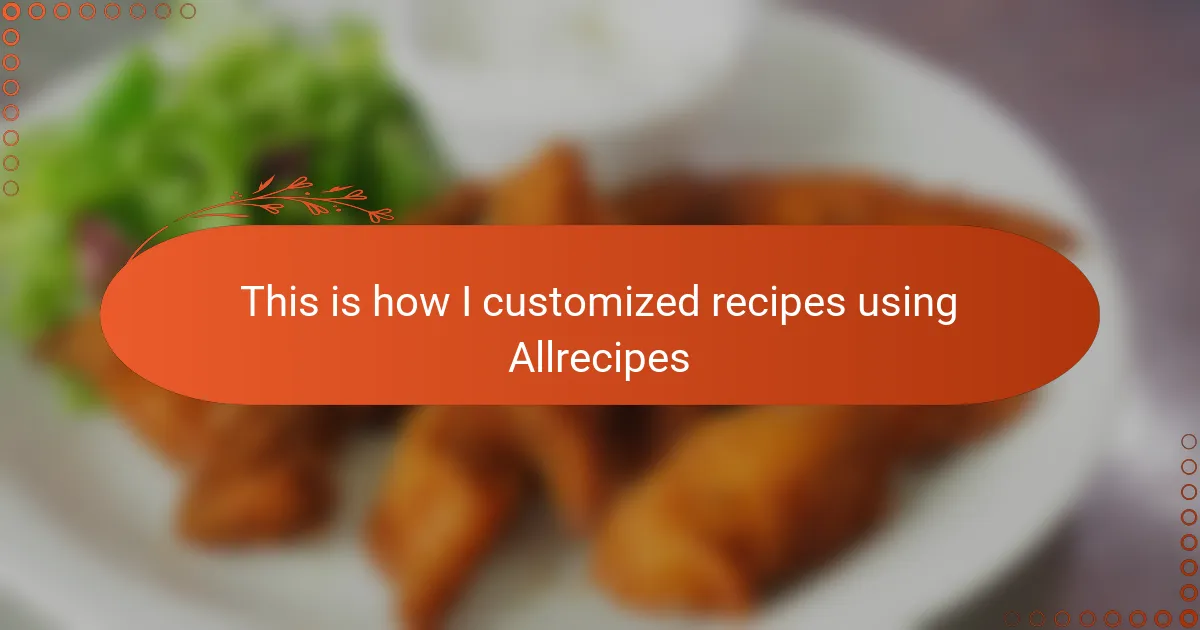Key takeaways
- Homesteading cooking emphasizes self-sufficiency and flexibility, allowing for creativity in using garden-fresh ingredients.
- Recipe customization enhances confidence, encouraging personal touches and adaptations based on available ingredients and personal taste.
- Essential ingredients include fresh produce, eggs, and pantry staples, fostering a connection to the land and tradition.
- Sharing customized recipes can enrich the cooking community, inspiring further experimentation and appreciation of local resources.
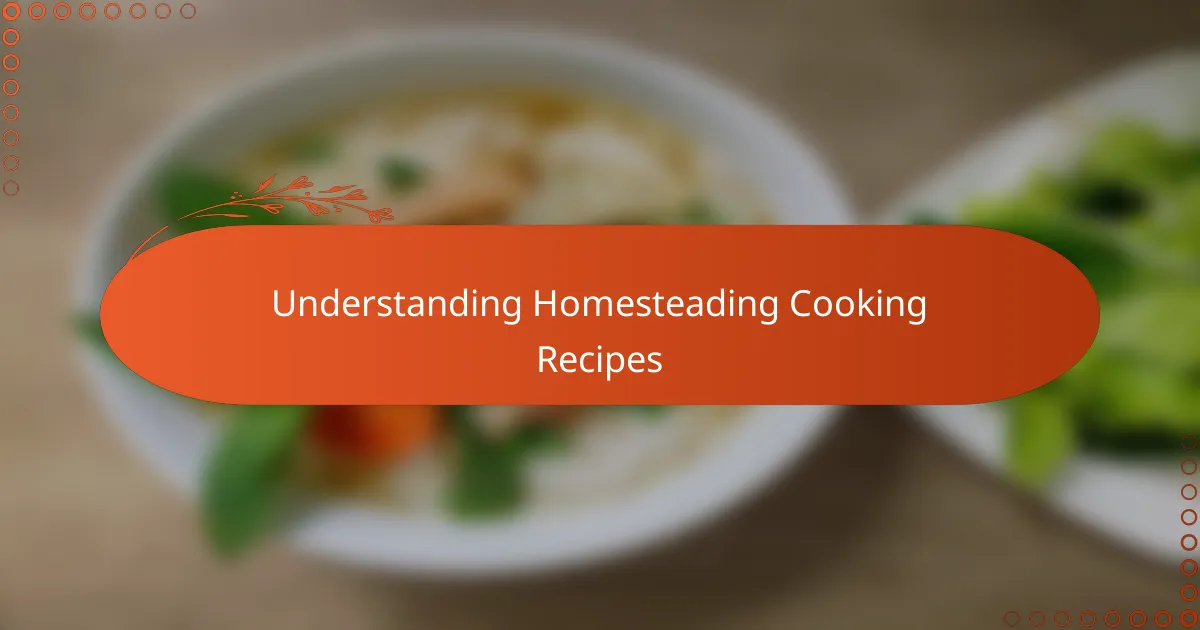
Understanding Homesteading Cooking Recipes
Homesteading cooking recipes are more than just instructions—they’re a reflection of self-sufficiency and connection to the land. When I first started exploring this style, I realized these recipes often rely on simple, natural ingredients that come straight from the garden or pantry. Isn’t there something deeply satisfying about turning what you grow into a meal?
One thing I’ve learned is that these recipes embrace flexibility. They encourage adapting with what you have on hand, whether it’s fresh eggs from your own chickens or herbs from your windowsill. Have you ever found yourself tweaking a recipe because your garden surprised you with an unexpected harvest? That’s the heart of homesteading cooking.
What I find most inspiring is how these recipes honor tradition while inviting creativity. They often connect us to past generations, yet leave room for personal touches. It makes me wonder—how can we preserve that balance between heritage and innovation in our kitchens?
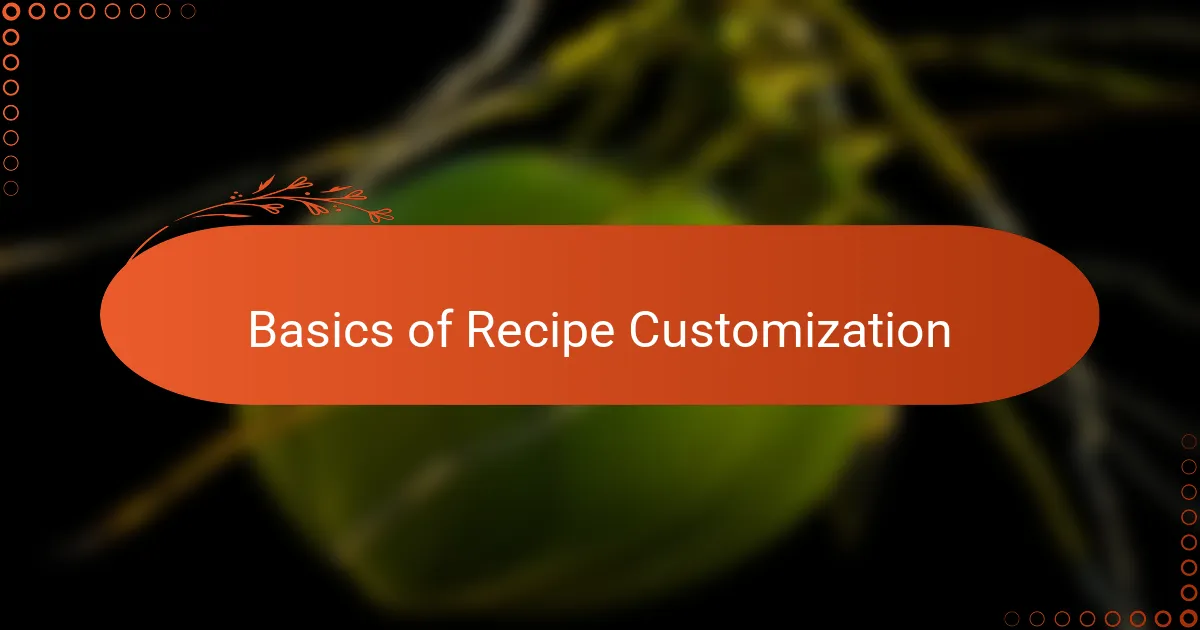
Basics of Recipe Customization
Customizing recipes is where the magic truly begins for me. It’s not about following rules but about making a dish your own, shaped by your tastes and what’s available. Have you ever swapped an ingredient on a whim and ended up loving the result even more? That’s the essence of customization.
I usually start by thinking about the flavors I want to highlight or tone down. Sometimes that means reducing salt because I’m using homemade broth, or adding extra herbs from my garden for a fresh twist. Simple tweaks like these can transform a familiar recipe into something uniquely satisfying.
What I’ve realized is that recipe customization is also about confidence. The more you cook and experiment, the more you trust your instincts. It’s a kind of conversation with your food — asking, “What do you need?” and then discovering the answer as you go along. Have you ever felt that flow? It’s one of the most rewarding parts of cooking.

Essential Ingredients for Homestead Cooking
When I think about essential ingredients for homestead cooking, fresh, homegrown produce immediately comes to mind. There’s an unmatched satisfaction in picking tomatoes or herbs from your own garden and knowing exactly where your food came from. Have you ever tasted a tomato straight off the vine? That burst of flavor is something store-bought just can’t replicate.
Another ingredient I always keep close at hand is eggs from my chickens. They add richness and depth to so many dishes, and using them feels like bringing a bit of my homestead’s heart to the table. Plus, I love how versatile they are—whether scrambled, baked, or used in baking, they keep the cooking interesting and connected to the land.
Of course, pantry staples like homemade flour, dried beans, and preserves are just as vital. They’re the foundation when fresh items aren’t available, reminding me that homestead cooking is about resilience as much as freshness. Do you find comfort in those timeless pantry ingredients? For me, they’re a link to tradition and a canvas for creativity.
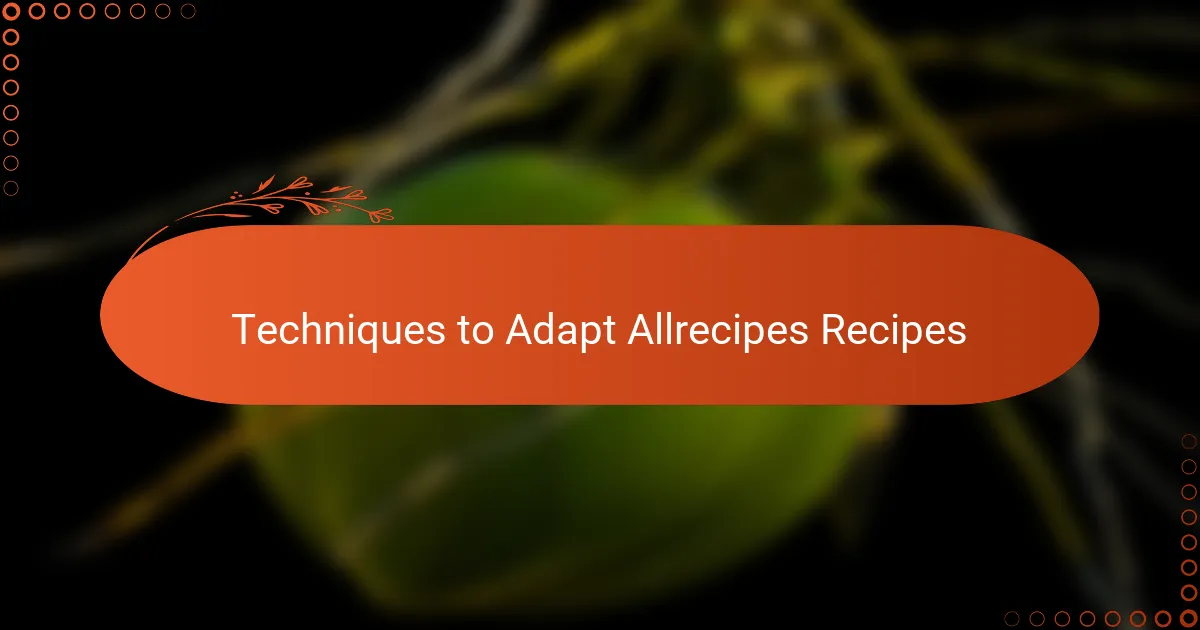
Techniques to Adapt Allrecipes Recipes
One technique I often use to adapt Allrecipes recipes is swapping out ingredients to match what I have on the homestead. For instance, when a recipe calls for store-bought milk, I replace it with fresh milk from my goats or cream from my cows. Have you noticed how those small changes can completely deepen the flavor and make a dish feel more personal?
Another approach I rely on is adjusting cooking times and methods to better suit my wood stove or cast-iron cookware. Sometimes, recipes assume modern appliances that my kitchen doesn’t have, so I’ve learned to trust my instincts by watching and smelling the food rather than relying strictly on timers. It’s a dance between tradition and adaptation, don’t you think?
I also like to play with herbs and spices based on what’s thriving in my garden. Instead of sticking rigidly to measured amounts, I add a handful of fresh rosemary or a pinch of lavender, experimenting as I go. That creative touch not only enhances the recipe but also connects me to the season and the land in a way pre-packaged mixes just can’t. How often do you find that nature’s bounty guides your cooking?
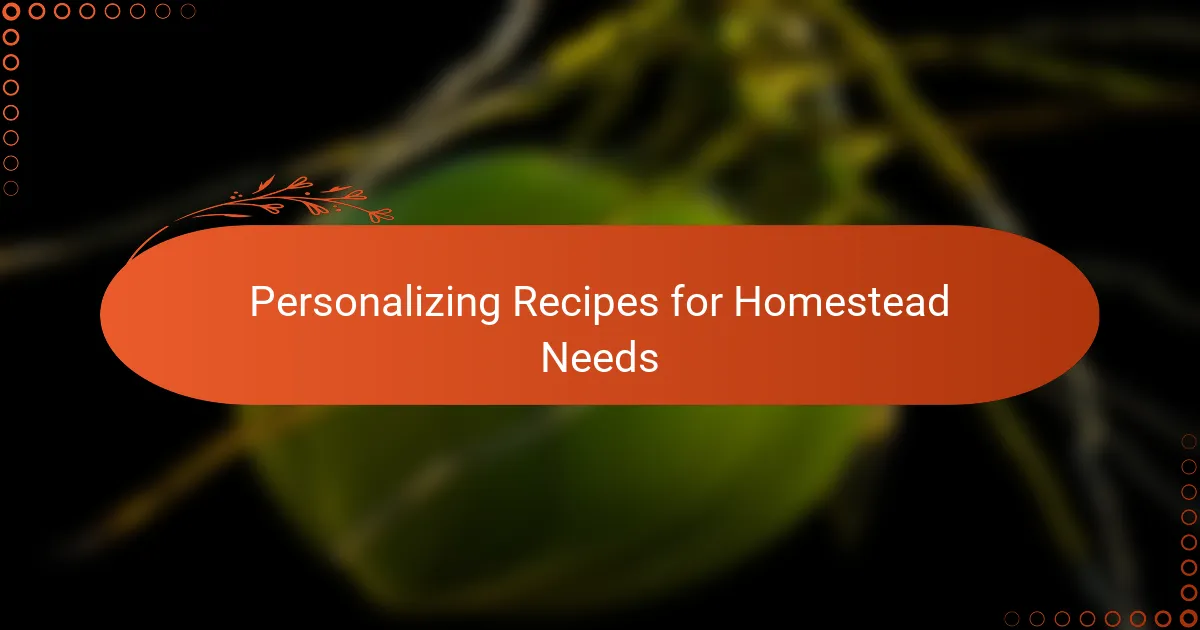
Personalizing Recipes for Homestead Needs
Personalizing recipes to fit the unique rhythm of homestead life often means rethinking every step—from ingredient choices to cooking methods. I recall one winter when my usual store-bought sugar ran out, so I experimented with honey harvested from our own beehives. The result was a rich, earthy sweetness that made me appreciate the value of tailoring recipes to what’s truly available and meaningful.
Sometimes, it’s not just about exchanging ingredients but about honoring the seasons and resources at hand. When tomatoes are abundant in summer, I tend to amplify their presence in recipes, and in leaner times, I lean on preserved fruits or root vegetables. Do you ever feel that your kitchen is like a living calendar, reflecting the cycles of the land? For me, this connection makes every meal feel intentional and rooted in the homestead’s story.
Customizing recipes also becomes a way to weave family traditions with my own discoveries. I’ve adjusted my grandmother’s stews by incorporating freshly foraged wild greens, which adds both flavor and a personal signature to a classic dish. It makes me wonder, how often do we let our heritage inspire innovation rather than confine it? That balance is what keeps homestead cooking both timeless and evolving.

Troubleshooting Common Recipe Issues
Sometimes, a recipe just doesn’t turn out as expected, and I’ve learned that a little troubleshooting goes a long way. For example, if a bread dough feels too sticky, I ask myself whether the humidity or flour type might be affecting it—and then adjust with a sprinkle of extra flour or more kneading. Have you ever discovered that subtle shift that saves a recipe mid-step? It’s like solving a delicious puzzle right in your kitchen.
When I first started customizing recipes from Allrecipes, I ran into issues like over-salted stews or undercooked vegetables. What helped me was focusing on tasting as I go rather than blindly following cooking times or measurements. It’s taught me to trust my senses more and to remember that recipes are guides, not rigid rules. Doesn’t it feel empowering to rely on your instincts and adjust a bit to suit your homestead kitchen conditions?
One trick I swear by is keeping notes about what worked and what didn’t after each cooking experiment. For instance, I once replaced sugar with honey but had to reduce the liquid because honey adds moisture. Making a quick note saved me from repeating that misstep later. Have you ever kept little cooking diaries that turned out to be your best kitchen companion? I find it not only improves results but also deepens the joy in cooking because every dish tells a story.
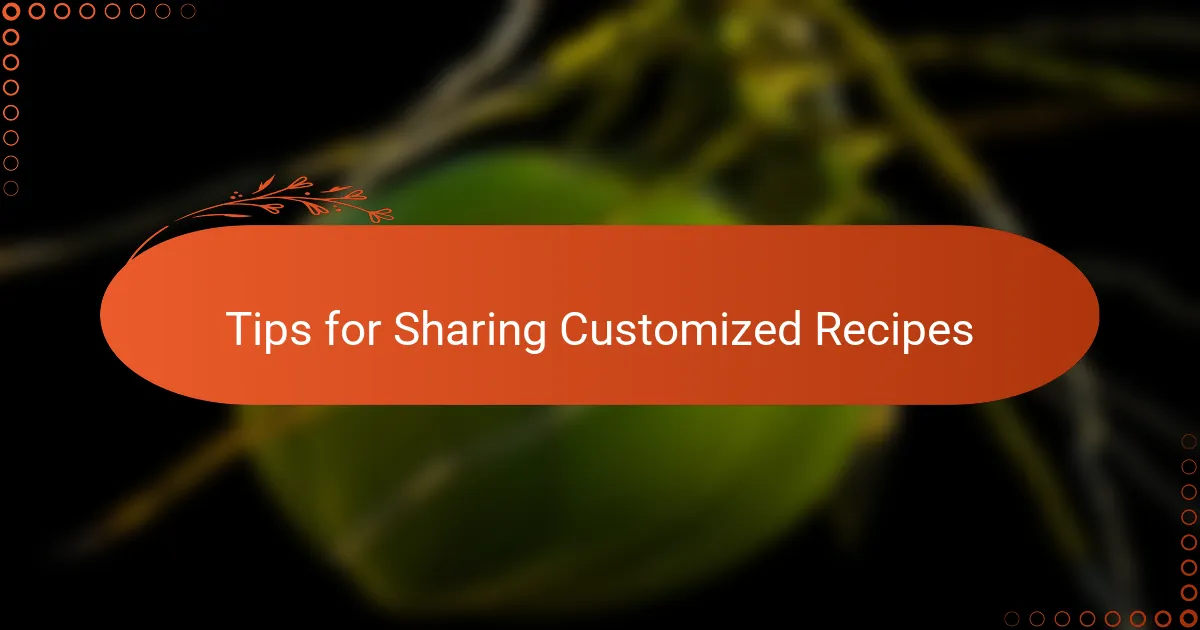
Tips for Sharing Customized Recipes
Sharing your customized recipes can be just as rewarding as creating them. I’ve found that being clear about the changes I made—whether swapping ingredients or adjusting cooking times—helps others understand the tweaks and appreciate the thought behind them. Have you ever received feedback that sparked a new idea? That exchange keeps the homesteading cooking community vibrant and evolving.
When I share my recipes, I like to include why I made certain substitutions, especially when they connect to my homestead’s resources. For example, mentioning that I used honey from our own bees instead of sugar adds a story that brings the recipe to life. Doesn’t a little backstory make a recipe feel more personal and inviting?
Another tip I swear by is encouraging others to experiment further. I often add a note suggesting alternative herbs or optional ingredients based on what’s available. It reminds me—and hopefully others—that customization is part of the fun and that every kitchen is unique. How often do you find yourself inspired by someone else’s cooking tweaks? Sharing recipes this way feels like passing along a living tradition rather than a fixed formula.
